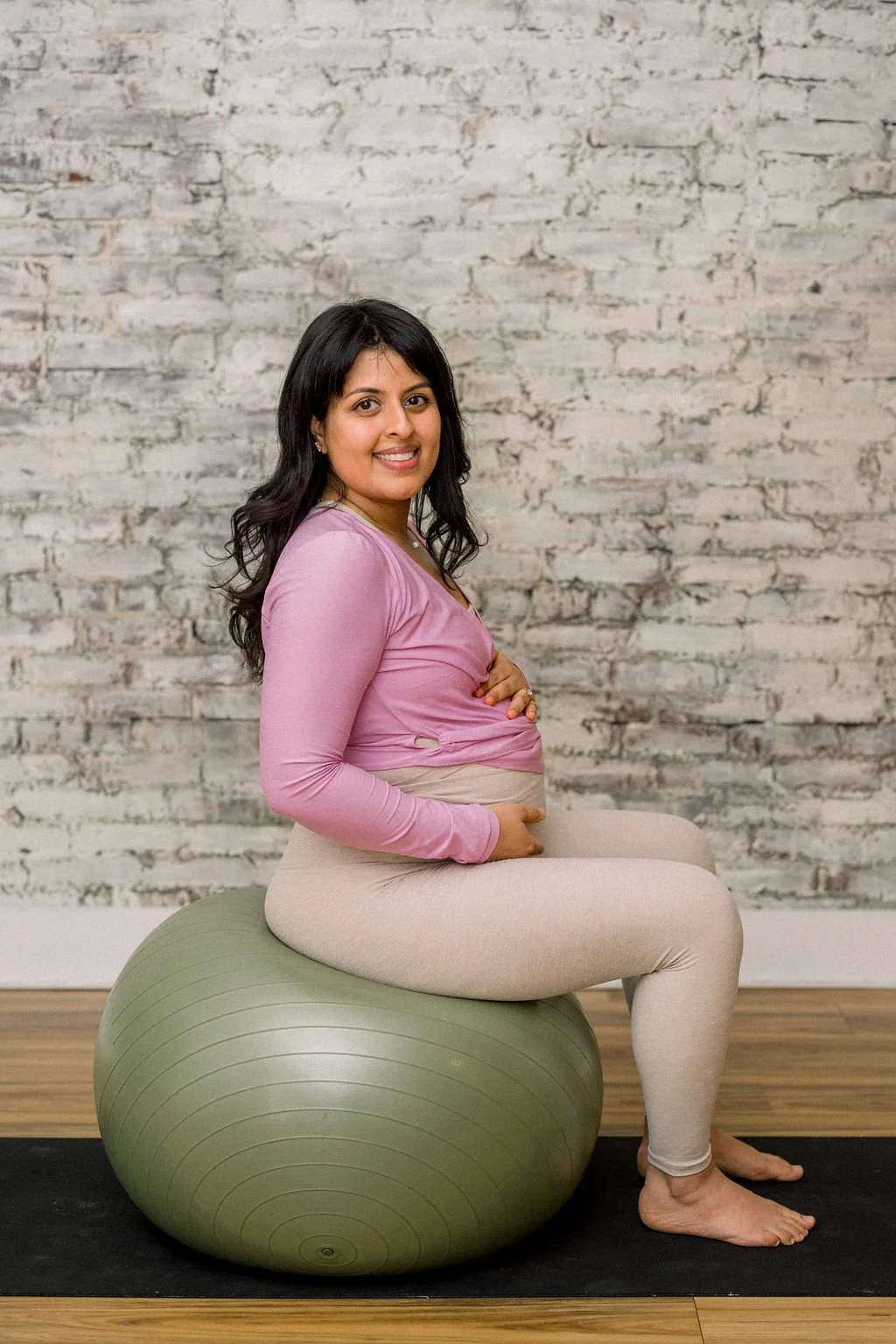The Truth about Diastasis Recti in Pregnancy
Can you actually prevent it?! Let’s chat about it.
What Is Diastasis Recti, Really?
Diastasis recti (DR) is the natural separation of the abdominal muscles — specifically, the rectus abdominis (aka the “six-pack” muscles) — that occurs as your belly grows during pregnancy. This separation allows room for your uterus and baby to expand, and it happens in most pregnancies.
What’s important to understand is that diastasis recti is not a tear, injury, or failure of your body. It’s a stretching of the connective tissue — the linea alba — that runs between the two sides of the rectus muscles.
It’s About Connective Tissue, Not Just Muscle
A big misconception is that diastasis recti is all about your muscles. In truth, the issue lies in the thinning and tension loss of the connective tissue, not just the space between muscles.
The goal is not to “close the gap” (which can still be functional if present), but to restore tension to the linea alba so it can effectively transfer load across the core system.
And that starts with how we manage intra-abdominal pressure.
Who’s More Likely to Develop Diastasis Recti?
Some degree of separation is normal, but certain factors increase the likelihood of a more significant or symptomatic DR:
Multiple pregnancies (especially close together)
Carrying multiples (twins, etc.)
Pregnancies later in life
Excessive abdominal pressure or coning during exercise
Chronic constipation or coughing
Poor core or breathing mechanics before or during pregnancy
A history of abdominal surgeries or trauma
Pressure Mechanics: The Heart of the Matter
Think of your core like a canister:
Top = diaphragm
Bottom = pelvic floor
Front and sides = abdominal wall
Back = multifidus and spine
When pressure builds in that canister (like when you lift, strain, or even breathe), it needs to be well-managed. If pressure pushes forward and outward repeatedly — especially onto a vulnerable linea alba — it can worsen diastasis or delay healing.
So instead of focusing on “ab workouts,” we need to focus on how we’re moving, breathing, and loading our body.
Can Diastasis Heal Postpartum?
Yes — in many cases, diastasis recti can improve significantly postpartum, especially with the right support and movement strategies. Healing doesn’t always mean a perfectly “closed gap,” but rather a strong, functional core that supports your daily life without pain or bulging.
Many people see improvements within the first 6–12 months after delivery, especially when supported by pelvic floor physical therapy. However, what you do during pregnancy makes a huge difference in recovery later.
How to Prevent Diastasis Recti from Worsening During Pregnancy
Here’s where your proactive work matters most. These are the most effective strategies to minimize the severity of DR during pregnancy:
🔸 1. Transverse Abdominis (TA) Activation
The TA is your body’s natural corset — a deep layer of abdominal muscle that wraps around your torso.
→ Practice gentle core engagement exercises like TA breathing, heel slides, or quadruped taps to keep this muscle active and responsive.
Think “hug the baby” to support you while you move.
🔸 2. Avoid Crunching & Coning
Avoid traditional ab work like crunches, sit-ups, or aggressive twisting that create forward bulging of your belly (called “coning”).
→ If you see a ridge or bulge during any movement, that’s a sign to modify or back off, this includes movement during the day like rolling in bed or lifting your toddler.
🔸 3. Focus on Alignment and Breath
Keep your ribs stacked over your pelvis — this helps optimize pressure and gives your core the best chance to stay functional.
→ Practice 360° breathing where your ribs and belly expand outward (not just up) and gently recoil on exhale.
🔸 4. Strengthen Functionally
Incorporate core-safe strength training with modifications like:
Squats with TA engagement
Bird dogs
Incline push-ups
Side planks
All while staying mindful of posture and pressure!
Example exercise: Side plank hip abduction with physioball
The Bottom Line
Diastasis recti isn’t something to fear — it’s something to understand, support, and move with. Your body is smart, strong, and capable of healing — and what you do now makes a big difference later.
Get Support
If you're unsure how to modify or what’s safe, working with a pelvic floor physical therapist can help you feel confident, supported, and informed throughout your pregnancy. If you are looking for home physical therapy workouts that are safe and effective to minimize coning, I have you covered from the second trimester onwards!
Want to have an empowered pregnancy?
I want pregnant moms everywhere to experience less pelvic floor dysfunction and more healthy healing! There’s nothing like personal care from an expert, which is why I recommend finding a certified pelvic floor physical therapist near you.
But many women don’t have access or coverage for this service — and others just want to supplement their work in a PT setting with at-home, easy-to-follow movements that are programmed out step by step, week by week. That’s why I created this seamless online pregnancy and postpartum pelvic health program. It’s called reBlume, and I think you will love it.
This program was carefully designed by me, a pelvic floor physical therapist, to help you feel comfortable, confident, and capable in your pregnancy journey. Inside, you’ll find:
More than 10 educational modules that will help you understand your body and advocate for what you need for a safe and strong pregnancy, labor and recovery.
A 36 week movement plan (for vaginal or c-sections) to strengthen you in your second trimester, prepare you for an incredible labor in your third trimester, and help you feel your strongest after your baby arrives!
1:1 direct messaging with me, a Pelvic Rehabilitation Practitioner and mom of two whose been through it.
A free app with lifetime access so you can reference this content forever.
As you care for your baby so well already, I want you to feel confident in taking care of yourself, too.
